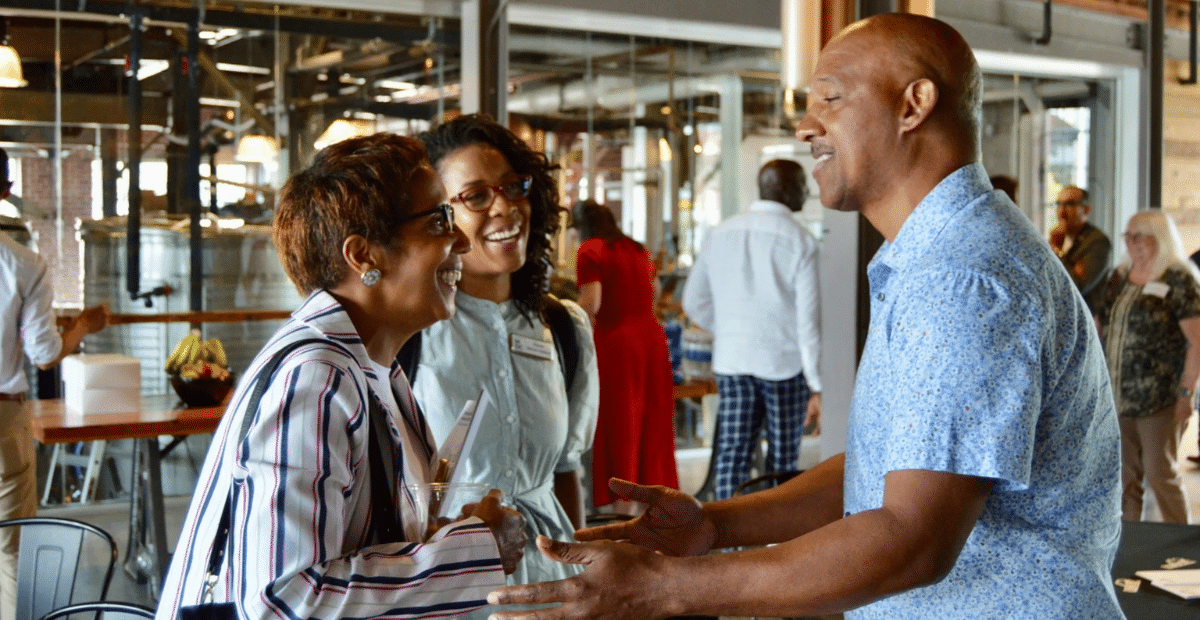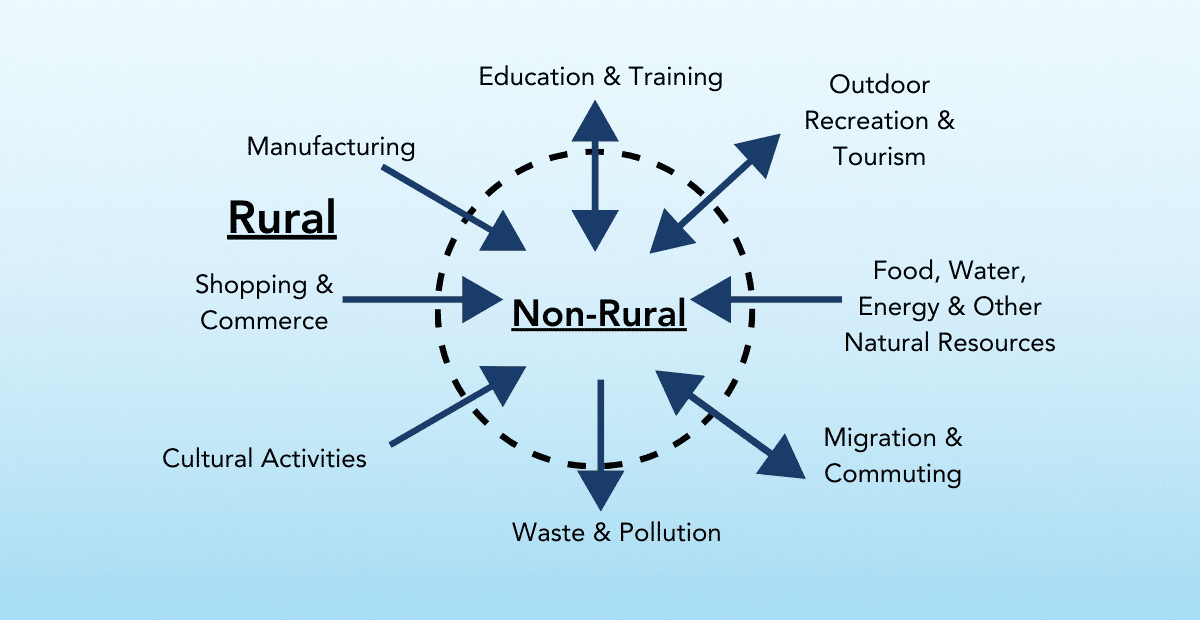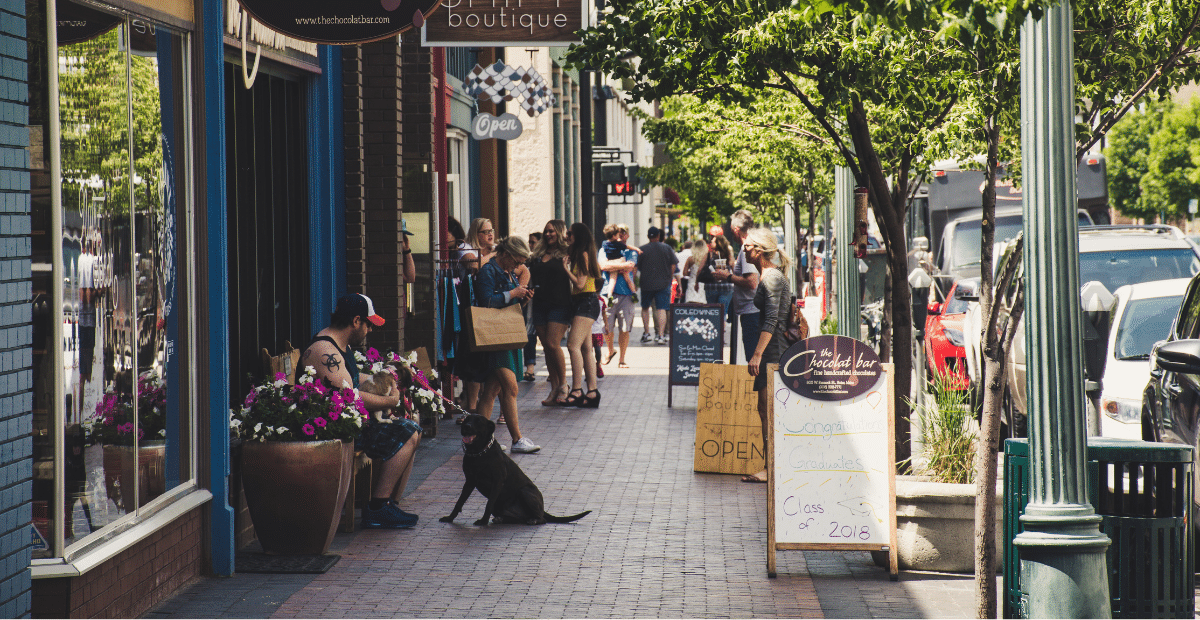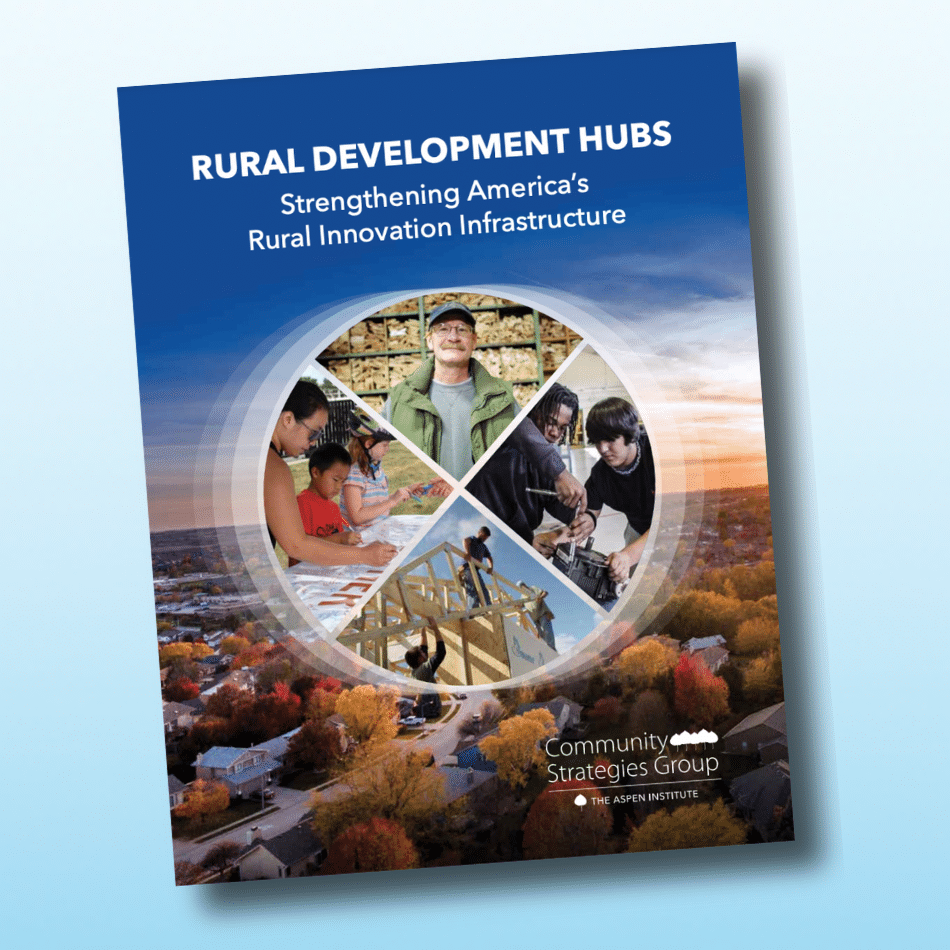Communities in the Southern US are rich with assets, ambition, and innovation, yet many face significant challenges. Rural areas, in particular, have long suffered from extractive economies and disinvestment, leading to limited economic opportunities, restricted access to education and healthcare, and deep-seated socioeconomic disparities. While these problems are widespread, the solutions must be as unique and diverse as the communities they aim to uplift.
Brandy Bynum Dawson—a proud daughter of rural North Carolina—is at the forefront of driving community-led solutions that foster thriving futures in her hometown and throughout the South. As a Senior Program Director at MDC, a nonprofit with over 50 years of experience uniting and supporting southerners to confront entrenched inequities across 13 states, Bynum Dawson is deeply committed to creating change. “We advocate for innovative solutions while celebrating the culture, brilliance, and warmth that make the South unique,” she says, underscoring MDC’s role in connecting institutions, communities, and foundations to develop, test, and sustain strategies for lasting impact.
MDC’s work focuses on four key strategy areas: rural prosperity and investment, educational equity, leadership and philanthropy, and economic security and mobility. Bynum Dawson’s role is centered on rural prosperity and investment, where she helps to strengthen rural community infrastructure by enhancing networks, building capacity, and amplifying local voices.
We’ve come to know Bynum Dawson for her tireless dedication through initiatives like the Rural Action Roundtable on Equity (RARE) of the Aspen Institute’s Community Strategies Group. She graciously took time from her packed schedule to share insights on her work, her home, and the deep connection between the two.
Q: How do you define rural prosperity, and how is MDC working to enable it?
A: Rural prosperity is about more than survival—it’s about thriving. It means ensuring that rural people and places have every opportunity to flourish, addressing not just economic challenges but also these communities’ social and environmental well-being. MDC is dedicated to this work by empowering rural leaders and community members with the necessary resources to build their future. From quality education and healthcare to job opportunities, infrastructure development, and improvements in everyday life, we’re focused on ensuring rural communities have the same chances to grow and succeed as their urban counterparts. At the same time, we honor and protect the unique culture and landscapes that make rural places so special. This is what rural prosperity is about—bridging the gap while preserving the heart and soul of these communities.
Q: What is MDC’s model for addressing the problems facing rural communities?
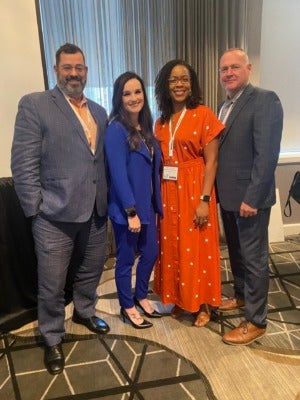
A: MDC is deeply committed to addressing the critical challenges rural communities face—education, healthcare, job access, recreation, healthy food, housing, community safety, disaster recovery, and resilience—key social determinants of health. These issues are rooted in poverty, limited resources, and economic and racial inequity.
Our model centers on fostering rural prosperity through strategic investment and capacity-building, working directly with local community leaders. We increase access to the resources, supports, and connections rural communities need to drive long-term systemic change. At the heart of our work is a focus on community-led solutions through strong partnerships. By building networks and relationships, we strengthen the social fabric that defines rural communities in the South.
Our goal is twofold:
- Empower rural communities to chart their path toward a thriving future, ensuring their voices lead policy change at the local, state, and national levels.
- Create the conditions for rural communities to thrive, both economically and socially.
Our team maintains a long-standing presence in the rural communities we live and work in, supporting transformative change over a decade. As a result of our rural engagements, communities experience stronger local leadership, clearer strategic plans, more inclusive and robust partnerships, better evaluation practices, and improved access to resources from sources at all levels—local, state, and national.
Q: What’s unique about the MDC approach?
A: Our community-centered approach emphasizes working closely with local communities to identify and address their unique needs, rather than using a one-size-fits-all solution. We want to support communities and tailor interventions to ensure they are relevant, understanding that rural communities know what works best for them.
Our work also integrates multiple facets of community development, from economic and educational initiatives to health and policy advocacy. We seek to provide a comprehensive strategy for rural prosperity, and we pay special attention to addressing inequalities and ensuring that marginalized groups and people within rural communities benefit from development opportunities and capacity building.
Q: What are the biggest challenges facing rural areas in the South, from MDC’s perspective?
A: From our perspective, the biggest challenges are economic disparities. We’ve known for a long time now that declining industries in rural communities have resulted in job losses and economic instability, and that limited job opportunities and a lack of diverse employment opportunities can drive younger generations to more urban areas.
We also understand that lower levels of educational attainment ultimately lead to limited opportunities for jobs and upward economic mobility. Rural areas in particular face challenges in accessing quality education and training programs because of years of disinvestment and inadequate funding models. And there tends to be a disconnect between the skills that rural residents possess and the skills that are needed for emerging job sectors because many rural workers often haven’t had the same access to education, training, or resources to develop these newer skills as their urban counterparts. Geographic isolation, limited broadband internet, fewer educational institutions, and the scarcity of workforce development programs in rural areas contribute to this gap. Without targeted support to bridge the gap between existing skills and those needed for emerging industries, rural workers can face barriers in adapting to changing job markets, despite their strong work ethic and existing talents.
Much of our work focuses on health equity and addressing health disparities, particularly in relation to economic mobility and healthcare access. The shift in funding models, along with many states’ delayed or lack of Medicaid expansion, has devastated rural hospitals and drastically reduced the number of healthcare providers available in these areas. The consequences are clear—rising medical debt due to delayed treatment and poor health outcomes, often linked to chronic conditions that could have been managed with better access to healthcare providers. These issues dominate headlines as rural communities continue to bear the brunt of inadequate healthcare access.
Rural communities also face significant challenges with rural infrastructure, particularly with digital equity and inclusion. While federal funding has expanded access to high speed internet, many areas still lack reliable service, limiting economic growth and connectivity.
On top of infrastructure gaps, rural areas are experiencing population declines as younger generations move away, leaving behind older populations and a shrinking workforce. This demographic shift threatens the long-term sustainability of these communities.
As a native of rural North Carolina, I deeply understand the sense of isolation many feel. Yet, I also see the unique opportunities that arise from the strong bonds people have with their communities and the land they know so well. By investing in infrastructure, health services, and economic and workforce development, we can build on this sense of connectedness to revitalize rural areas and unlock their full potential.
Q: What are the biggest opportunities you see?
A: Post-pandemic, we’ve noted that rural communities have been highlighted as physical places where opportunities have increased. The vast geographic nature of rural communities has presented opportunities for growing consumer bases for small business development and entrepreneurship, renewable energy, tech innovation, and agriculture advancement. There has been an increased investment in rural communities from federal, state, and philanthropic dollars. And of course, the natural beauty that rural communities provide means increases in opportunities for tourism and recreation.
But the big opportunity is community; rural communities are unique in that they are very people-centered, community-oriented, and resilient. There is a base of community and people-led organizations that have sought for decades to address the challenges and enhance and elevate the opportunities and celebrate the vibrancy of rural communities.
Rural communities are at the forefront of policy and systems change because the issues that are really pervasive in rural communities are a test case of what’s possible. If you can address issues in rural communities, then there is an opportunity to replicate solutions across other geographies.
Q: You sit on the Rural Action Roundtable on Equity (RARE) of Aspen CSG. How do Aspen CSG and RARE help you further your work across the rural South?
A: My involvement with RARE provides a powerful platform to expand and deepen MDC’s partnerships with key peers and allies across the rural South and beyond. It connects us to a regional and national cohort of rural hubs, all working toward the same goal—advancing opportunities for rural communities and people. Collaborating with others through RARE helps us exchange knowledge, share resources, and broaden our reach. There is strength in numbers, and being part of this network is invaluable for ensuring we serve rural communities with the innovation, collaboration, and advocacy they deserve.
Q: What led you, personally, to this area of impact?
A:This one’s easy for me, because as I’ve said, I’m a proud rural North Carolinian. I often joke that two things are in my DNA: rural development and policy and advocacy. That means that what I do is more than just a job—it’s personal. Supporting the incredible work at MDC isn’t just about leveraging my knowledge and experience; it’s about pouring my heart into something that matters deeply to me. It’s about standing up for the people and the place I call home. Every step we take toward equity and opportunity in rural communities feels like a win for my own family, my neighbors, and the future of the South.
The opportunity to lead the MDC Rural Prosperity and Investment strategy area is a beautiful and amazing opportunity to support marginalized communities left behind for generations. That, to me, is exciting—as a rural North Carolinian—and this work is what I consider my calling.
I know with all my heart that rural people are resilient. We have a can-do attitude, a determination to figure things out no matter the obstacles, and the ability to identify the resources and opportunities needed to move forward. This resilience is the backbone of rural communities, and it’s why I believe so strongly in their potential to thrive.
Beyond that, I feel incredibly blessed to be surrounded by so many amazing people—friends, family, and role models—who have shown me what it means to be a true public servant. Their example has shaped my commitment to this work. I know that one day, I’ll pass the torch to others who are just as passionate and dedicated to continuing the legacy of service in rural communities. Right now, however, I am wholeheartedly committed to seeing this work through.
Q: What’s the most important thing you’ve learned in your work promoting rural prosperity and investment?
A: The biggest lesson I’ve learned is that this work is challenging—it’s tough. We’re dealing with issues that have affected rural marginalized communities for decades. But what gives me hope is knowing that generations of people have been dedicated to this same cause. And now, we’re witnessing something incredible: a once-in-a-generation wave of investments flowing into rural communities.
It’s thrilling to see the nation finally recognizing that rural communities are on the map. I’m excited about the potential these federal investments bring, and even more so about the role we play in building the capacity of rural communities to not only receive these funds but to be exceptional stewards of them. We’re empowering communities to use these resources for community-identified priorities, creating long-term, meaningful change.
Q: What’s one thing you wish more people understood about rural communities?
A: Once you’ve seen one rural community, you have seen one rural community. While there are similarities between them, no rural community is a monolith. We can’t create these one-size-fits-all interventions. Rural communities are diverse, despite what some may think, and that diversity is a beautiful blessing that rural communities bring to all of us.
I want to restate the strength of people in rural communities: they are incredibly resilient, with a determined mindset, always finding a way to make things work. I share that same spirit, and I’m proud to have the opportunity not only to work alongside the people I hold dear but also to celebrate the uniqueness of every rural community I engage with. Each rural place has its special character, and I challenge us all to recognize and appreciate that.

